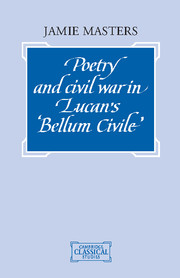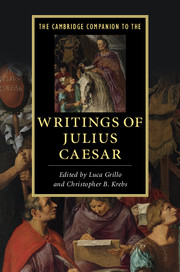The Art of Caesar's Bellum Civile
Traditional approaches have reduced Caesar's Bellum Civile to a tool for teaching Latin or to one-dimensional propaganda, thereby underestimating its artistic properties and ideological complexity. Reading strategies typical of scholarship on Latin poetry, like intertextuality, narratology, semantic, rhetorical and structural analysis, cast a new light on the Bellum Civile: Ciceronian language advances Caesar's claim to represent Rome; technical vocabulary reinforces the ethical division between 'us' and the 'barbarian' enemy; switches of focalization guide our perception of the narrative; invective and characterization exclude the Pompeians from the Roman community, according to the mechanisms of rhetoric; and the very structure of the work promotes Caesar's cause. As a piece of literature interacting with its cultural and socio-political world, the Bellum Civile participates in Caesar's multimedia campaign of self-fashioning. A comprehensive approach, such as has been productively applied to Augustus' program, locates the Bellum Civile at the interplay between literature, images and politics.
- Restores the Bellum Civile to its position as a masterly piece of literature, written with sophisticated narrative devices
- Considers the work in its historical context, showing how literature and politics interact
- Explores the Bellum Civile in the light of Caesar's multimedia campaign of self-fashioning, which included monuments, coins, polemic pamphlets, letters and even his own hairstyle
Reviews & endorsements
'By keeping in focus both the techniques of representation and what is at stake in them, the author shows the substance behind the rhetoric and demonstrates why historiography matters. Because of this and its crisp presentation of Caesar's modes of persuasion, The Art of Caesar's Bellum Civile is a perfect book for a college-level Caesar class and an excellent book for those teaching Caesar at any level.' Bryn Mawr Classical Review
'… it is only through the close reading of [Caesar's] narrative that [his] Bellum Civile impresses, through its intricate and artistic propaganda - pure but unsimple. [Grillo's] study is superb at teasing out its complexities.' W. Jeffrey Tatum, Journal of Roman Studies
Product details
March 2015Paperback
9781107470675
234 pages
229 × 151 × 12 mm
0.34kg
1 table
Available
Table of Contents
- Introduction. Between ancient and modern approaches: admirers and detractors of Caesar
- 1. The swift and the slow: Caesar's art of characterization
- 2. The great contest: constantia, innocentia, pudor, and virtus
- 3. Redefining loyalty
- 4. The limits and risks of Caesar's leniency
- 5. The barbarization of the enemy
- 6. Two army-communities and their effect on the Roman people
- 7. Shaping the future of Rome: the architecture of the Bellum Civile
- Appendix 1. Chronology of the Civil War (pre-Julian calendar) and narrative structure of the Bellum Civile
- Appendix 2. Composition, publication and genre of the Bellum Civile
- Appendix 3. The manuscript tradition of the Bellum Civile. Opening, end and book division.





